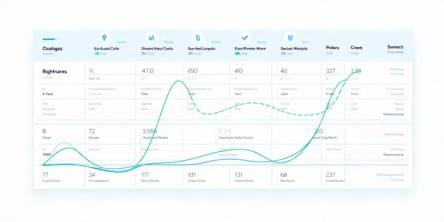Mobile App Testing: Key Challenges

It has been for the world to see that the number of mobile devices in the world has grown rapidly in the past decade or so. However, if you are skeptical about the extent of this growth, here are some stats that will convincingly demonstrate the extent of the growth of mobile phones: By 2040, there will be over 1.5 billion smartphone users in the world. The number of mobile devices sold across the globe in 2019 was just 1524 million units, by the way.
The popularity of mobile phones has translated into high demand for mobile apps, which, consequently, puts the spotlight on mobile app testing. Why? Well because in a cut-throat world where even the slightest misstep can cost high user churn for mobile apps, companies must seek to put only their best foot forward. In the context of mobile apps, companies need testing to be able to put their proverbial best foot forward.
Mobile applications testing has changed the whole aspect of our life. The modernization of basics for mobile applications testing has led to having high expectations from the apps and even a small error or mistake is not acceptable. And, while thousands of new apps are created every day there are various challenges faced by the technical team while testing the accuracy of the mobile applications.
Unfortunately, testing can prove to be quite cumbersome; here is a look at the key challenges the team is likely to face during the mobile app testing process.
- Various screen sizes: Unless you have been living under a rock, you know that mobile phones have become more prevalent than ever. This growth has been possible owing to the sheer number of devices available in the market, to cater to the varying demands of different customers. Now this works out well for consumers but not so much for testers who must factor in not only different devices but also varying screen sizes within one range of phones. This is because screen size plays a crucial role in the app’s performance across different devices, which complicates things considerably.
- High levels of user expectations: It is not news that modern-day customers have extraordinary expectations from the companies with which they engage. While this is great for competition, this continually evolving nature of customers’ expectations translates into massive challenges for app testing. You see, to fulfill customers’ expectations mobile apps need to be continually updated and that cannot happen till the testing team has verified the updates.
- Security: This one is a tad obvious, we know, but it is such an important challenge that it merits some discussion. Even though some respite to security concerns in this regard has been found via cloud-based testing tools, testers must still contend with it. The list of their persistent security challenges includes the ease with which hackers can exploit specific vulnerabilities to gain access to sensitive information, the lack of or substandard levels of encryption in modern mobile apps, etc.
No matter how much one may try, there is no escaping the fact that mobile apps have indeed managed to establish themselves as the mainstay of the modern world. People use mobile apps for a variety of reasons: to send money to another corner of the world, to shop online, to order food, etc. Given the degree of reliance on apps, testing them is also a critical part of the process because what is the point of offering a substandard app to your users after all? So go ahead and start your hunt for a reliable mobile application testing company to assist in your app development endeavors.
Similar Articles
Food delivery applications, including Uber Eats, DoorDash, Zomato, Swiggy, and Grubhub, generate large volumes of valuable data.
Modern businesses are drowning in communication overload, and much of that burden stems from outdated tools that simply can’t keep up
Building lending software isn’t just a technical project—it’s a business decision. Whether you're a fintech founder or part of a traditional lending institution trying to go digital, three questions will shape everything that follows
Learn why robust security is crucial for super app development. Explore key strategies and best practices for mobile app development security.
Walkie-talkies with an extensive reception capacity have changed significantly when it comes to portable communication by displaying cutting-edge features with seamless connectivity that covers more than just the state
USB-C technology has revolutionized the way we charge our devices, offering faster charging speeds, higher power delivery, and universal compatibility across multiple devices
Discover expert mobile app development strategies to create a viral app that attracts users and boosts engagement
Optimize app localization for iOS users across the EU with language, cultural, and regulatory adaptations. Engage users and boost retention with these tips!
Discover the top 10 mobile app development trends of 2024! Explore 5G, AI, AR/VR, blockchain, and more to stay ahead in the ever-evolving app development landscape.









